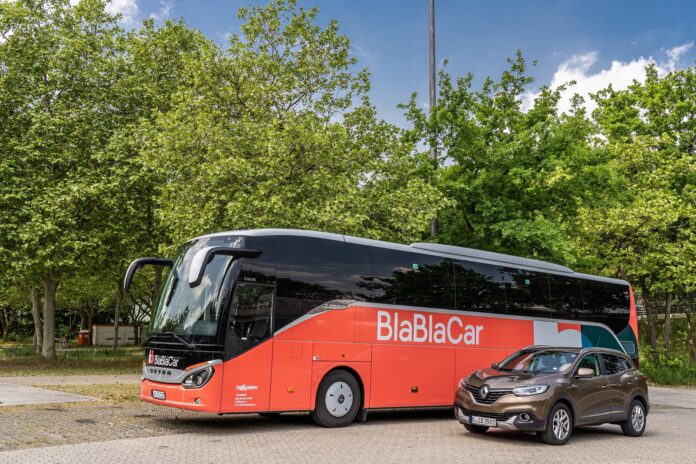BlaBlaCar reviews the results of its ten years of activity in long-distance transportation. In the Provence-Alpes-Côte d’Azur region, Nice remains logically the busiest point of the most famous carpooling network in France.
Since the market liberalization in 2015, long-distance bus travel has experienced steady growth in France. BlaBlaCar Bus, which acquired Ouibus in 2019, is now an important player in this sector. It connects 350 destinations, including many routes in the Provence-Alpes-Côte d’Azur region.
Nice is prominently featured in the ranking of the most serviced cities. It ranks second in the region, with nearly 406,000 passengers welcomed since 2019. Only Marseille is ahead. Cannes completes this trio, with approximately 102,000 arrivals. A significant gap if we consider the difference in population between these three cities (Marseille: 875,000; Nice: 356,000; Cannes: 74,000). Thus, it can be observed that Cannes has more people carpooling than residents. A figure not so surprising given the various events that attract tourists to the Croisette, such as the Cannes Festival, for example.
BlaBlaCar buses allow travel at a lower cost. According to the company, tickets are up to 60% cheaper than the train. For many, this price makes the difference. Part of the users claims they would not have been able to travel otherwise.
Nice is also a departure point for new destinations implemented this summer. Travelers can now reach Angers, Nantes, Brussels, Grenoble, or Luxembourg directly from the region.
A good national ranking?
BlaBlaCar is not limited to bus transport. Carpooling remains its core activity. In this area too, Nice holds a central position.
It remains the most carpooled city on the Côte d’Azur. However, the 5th largest city in France only ranks 26th nationally, a drop of four ranks compared to the previous year. This decline does not prevent the city from remaining a key point for shared trips.
Throughout the region, more than 132,000 carpooling spots are offered this summer. The supply is adapting to demand, with departures to Paris, Nantes, Dijon, Tours, or Brussels.
The target audience is varied. Two-thirds of the passengers are under 35, but the number of retirees and families is increasing. Buses and carpooling allow for transporting more luggage without additional costs. This detail matters to families.
Notable ecological impact
BlaBlaCar also highlights the environmental effects of its model. In 2024, the community would have avoided the emission of 2.5 million tons of CO2 thanks to carpooling and collective transport.
The company presents itself as a sustainable, accessible alternative rooted in local areas. 70% of its bus routes do not pass through Paris. This decentralization choice promotes interregional connections, such as those linking Nice to other French or European cities.
Local anchorage is an asset for many municipalities. On the Côte d’Azur scale, the dynamic seems well established. BlaBlaCar wants to continue developing these solutions in the coming years.
Between flexibility, budget, and ecology, the region’s inhabitants are gradually finding their place in this new way of traveling.


